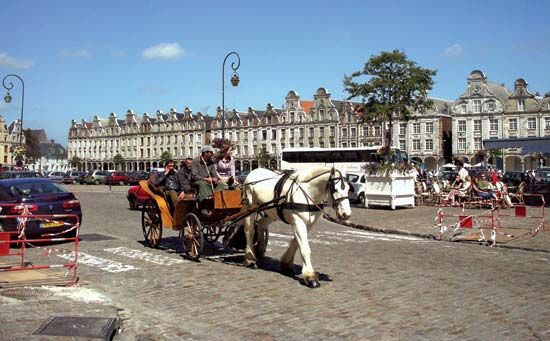Artois
Our editors will review what you’ve submitted and determine whether to revise the article.
Artois, historic and cultural region encompassing most of the northern French département of Pas-de-Calais and coextensive with the former province of Artois.
The names of Artois and Arras, the capital, are derived from the Atrebates, who inhabited the district during Julius Caesar’s time. From the 9th to the 12th century, Artois belonged to the counts of Flanders. It passed to Philip II Augustus of France in 1180 and remained under French influence until 1329, when it entered a period of Burgundian domination. After being ruled by the Habsburgs from 1500, Artois was conquered by France during the Thirty Years’ War (1616–48); French sovereignty in Artois was confirmed in the Treaty of the Pyrenees (1659) and in the treaties of Nijmegen (1678 and 1679) and Utrecht (1713).
The region separates Picardy, to the south, from the Flemish plain, to the north. From the high European Middle Ages it was a prosperous trading and manufacturing region associated with the fortunes of Flanders, but the region saw its historic fortune ended by the destruction brought by World War I. Numerous towns extensively damaged during World War I were entirely rebuilt after 1918. The population of these small towns has been further depleted by the emigration of young workers.
Artois is largely Roman Catholic, but less strongly so in the mining regions and the new neighbourhoods of Arras. Small Protestant parishes were established in the industrial towns during the early 20th century. The society of the Rosati, which was established in 1778 and saw a renascence in 1877, was instrumental in reviving regional literature.










